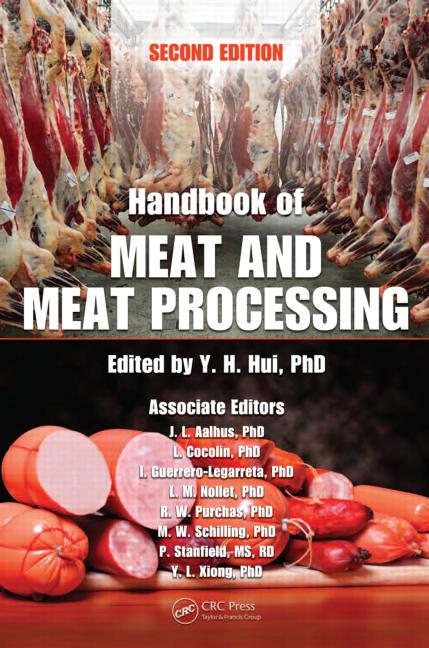Managing Hispanic Workers: Bridging the Cultural Gap
By Woodruff Imberman
Management skill combined with cultural knowledge helps companies to maximize workplace results for this important, growing segment of the industry’s workforce.
The statistics are in. Not only is the growing wave of Hispanic immigrants having a profound effect on American society, but it is greatly impacting the poultry processing and meat-packing industries, as well. Based on the latest data reported in the 2000 Census by the Bureau of the Census and projections made by the Bureau of Labor Statistics, some 38,000 new jobs will be added in the two industries this decade, as it grows to 531,600 jobs nationwide in 2010 from 494,365 in 2000.
Most of these jobs will be filled by immigrants, mainly Hispanic. Because of the traditional high turnover in these industries, more jobs in the future will likely be filled by Latino workers.
The national average of Hispanic employment in poultry processing will rise to about 47 percent in 2010, up from 41 percent in 2000, and in meat packing this average will grow to 44 percent by 2010, up from 38.7 percent during the same decade.
Hispanics are the fastest-growing segment of America’s population. In 2000, there were about 31 million Hispanics — or about 11.4 percent of the total population. This will increase to 41 million in 2010, or about 13.8 percent of all workers, and 52.6 million in 2020, to a little more than 16 percent of all workers.
Approximately 21.8 percent of employees in American manufacturing industries are Hispanic, (nearly double the percentage of non-Hispanic Anglos) up from about 15 percent in 1984. In some areas, this percentage runs more than 90 percent, particularly in California and the South West, the New York City area, many inner cities particularly in the industrial Rust Belt areas, and in rural areas where many red meat and poultry processing facilities are located.
What the stats mean
Here’s what these statistics mean for meat industry executives. To improve yields and productivity and boost their own profitability, meat processors must learn how best to motivate their growing number of Hispanic workers. To gain the best efforts from these workers, managers must understand that Hispanics have a psychology and culture that differ from the traditional American psychology and culture. To effectively motivate Hispanic workers, their cultural traditions must be honored in work-place practices.
Iowa example
The best of intentions will fail if a manager does not understand the culture. For example, a bright young Pennsylvanian with a newly-minted MBA went to work for a large pork processor. After a stint in headquarters, he was sent to rural Iowa to run a large pork-processing plant. It had a high percentage of Mexican workers, poor yields, and a number of USDA citations. Full of vim, vigor, and book-learning, this “newbie” tried to improve the situation by getting "closer" to his mainly Spanish-speaking work force.
Wearing jeans and newly-purchased cowboy boots, he asked his shift superintendents to call him by his first name. He walked through the kill floor and fab lines with a translator, “helping” workers while correcting mistakes. He felt he was bettering relations by pushing hard for higher performance, especially in the ham and bacon lines --- which generated much of the plant’s profits, and where the output was sold by brand name.
Despite his efforts and dress, plant performance continued downhill. Why? Because he did not understand the Hispanic mindset, and he was unaware that managing workers with Hispanic backgrounds, cultures, and psychologies differs from managing traditional Americans.
| Distribution of Civilian Labor | in THOUSANDS | ||
| 1990, 2000, and PROJECTED 2010 | |||
| GROUP | 1990 | 2000 | 2010 |
| White | 107,447 (78.7%) | 117,574 (75.3%) | 128,043 (71.7%) |
| Black | 13,740 (10.0%) | 16,603 (10.6%) | 20,041 (11.2%) |
| Hispanic | 10,720 (7.8%) | 15,368 (9.8%) | 20,947(11.7%) |
| Asian | 4,653 (3.4%) | 6,687 (4.2%) | 9,636 (5.4%) |
| Source: Fullerton, H.N., and Toossi, Mitra: LABOR FORCE PROJECTIONS to 2010, Monthly labor review, 2001, Table 8, Page 32 | |||
Maintaining roles
Hispanics identify people by class and role and expect them to act in accordance with those roles. Wearing casual clothes is regarded as lacking in respect. The higher the status or importance of the job, the more formal the attire.
Hispanics expect managers to be proper, courteous, reserved, and very formal. Hispanics, especially Mexicans, emphasize hard work and mutual respect. Everyone from a new deliveryman to branch manager is worthy of the same respect. This attitude is reflected by polite speech, courtesy, and an acknowledgment that all workers have an important role to play.
Hispanic workers expect managers to be courteous. Anybody in supervision who raises his voice or curses will earn disdain, not cooperation, for his or her efforts.
Hispanics admire Americans for their know-how and energetic approach to work, but they also think Americans are all business and lack human sentiments that they value. Hispanics like a smile, or a "Buenos Dias," in the morning, courtesy during training, and suggestions for correcting mistakes instead of just criticism.
Training can be more effective by emphasizing ceremonial aspects. Special recognition efforts for Hispanics should be implemented. Special "diplomas" upon training completion and displays of "graduation" photos in lunchrooms are expected. Graduation ceremonies give Hispanics the respect they believe is deserved.
Getting quality and cooperation
Whatever their origin, pay, or citizenship, the inability to communicate well in English does not mean Hispanic workers cannot contribute to better yields, nor does it mean they have no ideas about how to reduce waste.
Most Mexican employees are hard-working, uncomplaining workers, rarely given to filing grievances or protesting working conditions. The idea that one can complain about a superior’s behavior is bewildering, and appealing a supervisor’s ruling “up-stairs” goes against the grain. This is a disrespectful challenge to supervisory authority, something few Hispanics would do. When treated with the dignitad they believe they deserve, non-union Hispanics rarely show interest in union organizers, and if unionized they are reluctant to strike their padrone who has created an environment of mutual respect.
| Projected Job Growth 2000-2010 | MEAT PRODUCT INDUSTRIES | |||
| OCCUPATION | PROJECTED 2000 EMPLOYMENT | 2010 EMPLOYMENT | GROWTH IN JOBS ABSOLUTE | GROWTH IN JOBS PERCENTAGE |
| TOTAL ALL OCCUPATIONS | 494,365 | 531,600 | 37,235 | 7.5% |
| Slaughterers and Meat Packers | 114,100 | 116,400 | 2,300 | 2% |
| Meat, Poultry, Fish, Cutters and Trimmers, | 102,155 | 111,175 | 9,020 | 8.8% |
| Packaging, Filling Machine Operators and Tenders | 27,515 | 29,785 | 2,270 | 8.2% |
| 1st Line Supervisors of Production, Operating Workers | 15,525 | 16,650 | 1,125 | 7.2% |
| Other Food Processing Workers | 14,935 | 14,230 | -705 | -4.7% |
| Laborers, Material Handlers | 11,230 | 12,040 | 810 | 7.2% |
| Helpers Production Workers | 10,900 | 11,900 | 1,000 | 9.2% |
| Maintenance Repair Workers | 9,660 | 10,220 | 560 | 5.8% |
| Source: Industry-Occupation Employment Matrix , Office of Occupational Statistics And Employment, Bureau of Labor Statistics, U.S. Department of Commerce | ||||
Identifying Irritants Helpful Periodic Employee Audits by outside experts quickly identify worker concerns and ideas for improving productivity and customer service. Face-to-face interviews with Hispanic workers often turn up many irritants of which shift superintendents — to say nothing of plant managers — are aware. For example, inadequate knife sharpening leads to high waste and carpal tunnel claims. It does little good to send occasional trainers out on the floor if hide pullers are poorly maintained or the chain speed on a poultry line is too high. Most important, abusive foremen can be identified and their behavior corrected by special supervisory training keyed to the actual problems uncovered in the audit. Using in-house examples makes the training meaningful to the supervisors.
Audits by outside consultants invariably highlight many helpful suggestions for improvement of morale, operations, and chain speeds. Hispanic workers rarely reveal such ideas to foremen or shift superintendents for fear of reprisals. After such a two-way communications system is started by an outside expert, Hispanics learn their ideas are welcomed. Then, an internal HR representative can be trained to take over.
Poultry processors and meat packers, especially those with multiple locations, who make these efforts to understand Hispanic culture and outlook, try to improve communications, and who institute special supervisory training procedures, will find the payoff can result in higher morale, faster chain speeds, better yields, and a better bottom line. NP
Further details on this subject can be found in the following studies: "Mexican Workers North of the Border," Harvard Business Review, Jan.-Feb. 1991; and “Effective Management of Hispanic Workers,” Area Development Magazine, Feb. 1990. Complimentary copies are available on request to Dr. Woodruff Imberman, President, Imberman and Forest, 1740 Ridge Av., Evanston, IL 60201; IMBandDEF@aol.com, www. Imbdef. For more demographic details, see Monthly Labor Review, November, 2001, Bureau of Labor Statistics, US Dept. of Labor, and various studies made by Population Branch, Population Division, Bureau of the Census, US Dept. of Commerce.


Report Abusive Comment